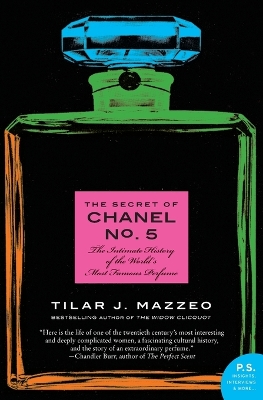Reviewed by brokentune on
One of the stories told in The Hotel on Place Vendome provides an insight into the life of Coco Chanel and a brief glimpse into the history of her famous perfume - both left me interested enough to want to read a little bit more about both subjects - even tho I am not impressed by either Chanel or her perfume.
The Secret of Chanel No. 5 is a very detailed account of how the perfume was created, the people involved in the process, and the myths and legends associated with it - such as it's origins. Somewhat surprisingly, Coco Chanel herself only seems to play a relatively minor role in the story of the perfume which predates the rise of Chanel as a fashion icon.
Unfortunately, there were two aspects that just did not work for me with The Secret of Chanel No. 5:
For one, whilst some of the writing reveals details of Mazzeo's research in an engaging style, she lapses into what seems to be a fictionalised or hypothetical account when describing the motivations of some of the people involved in the story. As this is supposed to be non-fiction, it grates on me when Mazzeo describes what individual people have felt or thought or sensed when it is doubtful that any of this could be corroborated by factual sources. I'm sure Mazzeo has done a lot of research when writing this book. However, when she presents her own interpretations or hypotheses as the thoughts or emotions of the people she writes about, she diminishes the credibility of her work.
The second aspect that did not work for me was the repetitious nature of some of Mazzeo's over-blown descriptions of the subject matter. In essence, some of the descriptions of the perfume read like they could have come straight out of an advertisement. This is in contradiction to the effort of the book, which is to demystify the legendary status that this particular product has achieved over the decades.
However, I must admit that it did make me smile to think about how the book was trying to deconstruct a the brand of Chanel No. 5 but using generic "sales-speak". I'm just not sure that the irony was intended by the author in this case.
Reading updates
- Started reading
- 7 February, 2016: Finished reading
- 7 February, 2016: Reviewed
